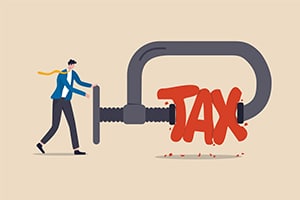
Business Advisory Services
Everything you need to help you launch your new business entity from business entity selection to multiple-entity business structures.
Hey - Our site just had a makeover and we are sorting through the hiccups!
Hey - Our site just had a makeover and we are sorting through the hiccups!

Everything you need to help you launch your new business entity from business entity selection to multiple-entity business structures.

Designed for rental property owners where WCG CPAs & Advisors supports you as your real estate CPA.

Everything you need from tax return preparation for your small business to your rental to your corporation is here.

WCG’s primary objective is to help you to feel comfortable about engaging with us
Posted Sunday, September 30, 2018
Table Of Contents
A marriage is an agreement or perhaps a contract, and it seems interesting that another agreement is necessary to end the original one. Enter the divorce settlement agreement. A divorce settlement agreement is the document that explains parenting issues if you have children or a disabled adult such as child support, parenting time, holidays, medical decisions, school choices and a gaggle of other things. A divorce settlement agreement also has several financially related issues and is sometimes referred to as a divorce property settlement.
WCG are divorce financial analysts, and it is the financial arena that we see most divorce agreements simply screwed up. Not the most politically correct term, but you know what we mean. Keep reading.
Commonly the biggest issue to hammer out in a divorce is parenting issues, and if you don’t have children under the age of 18 or 21 (depending on your state), this section doesn’t apply. However, if you do have children, and the parenting issues are contested (and they usually are), by the time we all get around to the financial angles the divorcing couple are fatigued. Or perhaps even bored and have already started to move on to the next life. This of course is dangerous. And it even happens to attorneys! “Oh man, I am just sick of this case.”
Enter the Certified Divorce Financial Analyst. Jason Watson, Managing Member of WCG, only focuses on the financial angles of a divorce. So, when parenting issues has taken its toll and you might ready to punt on the money issues, you need some extra help.
So, our perspective is from the financial side and as tax professionals and divorce financial analysts. Aside from the usual assigning value to assets and trading them, there are some other nuances in the divorce property settlement or divorce settlement agreement to consider.
Hey, WCG (formerly Watson CPA Group) are tax professionals, so we are going to look at tax issues first. If there are loss carry forwards from previous years, those need to be valued and split between spouses. The big three are a) long-term capital losses from selling stock or other securities at a loss, b) disallowed rental losses and c) net operating losses from businesses. There are a couple of carry forwards that are more obscure such as alternative minimum tax (AMT), foreign tax credits, adoption credits and a few others weird ones. Will your divorce attorney know about these? Probably not.
Huh? Did a zoo animal escape? No… but… We’ve seen several divorce lawyers draft divorce settlement agreements that innocently create a thing called alimony or spousal maintenance recapture. If spousal maintenance is deemed front-loaded, or if a scheduled spousal maintenance reduction coincides too closely to a child event the a portion of the spousal maintenance will be disallowed. The payor now has to amend his or her tax returns, and pay taxes. And the recipient gleefully amends his or her tax returns and gets a tax refund. Yuck, if the payor is you. You can read IRS Publication 504or review IRC Section 71 if you can’t get enough.
The QDRO, pronounced kwa-dro in divorce circles, splits up a retirement or pension plan between the participant employee and the spouse. There are pages and pages of information on this. But our goal here is to alert you to IRC Section 72(t). This is a nugget in the IRS code that allows the non-participant who submits a Qualified Domestic Relations Order to divide a 401k (for example), but needs a one-time lump sum to be distributed prior to the split. This distribution will be penalty-free but the recipient will pay income taxes. Many recipients will use this to pay bills, attorney fees, bridge income sources, etc. But there is a gotchya with QDROs and 72(t) exemptions.
If you submit a QDRO, divide the retirement or pension money, roll that money into an IRA, and then take a distribution, Section 72(t) will not save you, and the distribution will be penalized at 10% plus income taxes.
However, if you submit the QDRO, divide the retirement or pension money, take a distribution from the plan prior to rolling the remaining money into an IRA, the distribution will be penalty-free. This can get tricky, so you should get some help.
There are 16 exemptions under IRC Section 72(t) but only one applies to divorces.
Most people are aware that if you live in your primary residence for 24 months out of the previous 60 you can exclude up to $500,000 worth of capital gains. There are some other devils in the details. But what if you moved out of the house, the former spouse lives in the house for five years and later sells the house that you still own a part of. Can you exclude the capital gain? Perhaps. IRC Section 121(d)(3) deals with this and reads in part, “an individual shall be treated as using property as such individual’s principal residence during any period of ownership while such individual’s spouse or former spouse is granted use of the property under a divorce or separation instrument.” So, Yes, you can but only if your divorce lawyer crafts the divorce settlement agreement correctly.
These are some of the biggies. There are other financial issues related to a divorce settlement agreement that need to be reviewed by a financial expert or a certified divorce financial analyst.
We put the carriage before the horse. Truly the first thing to do is compute the value of each piece of marital property (including those pesky loss carry forwards and credits on a tax return). What is more valuable? A $100,000 Roth IRA or a $100,000 traditional IRA? Are they the same?
What about $60,000 in furniture versus the $50,000 equity in a rental property? Yes, trick question. What are your thoughts on two small businesses, each with $100,000 in net income? What if we told you one business was insurance sales with a ton of recurring revenue and the other was an interior decorating business? Which business has more value?
The answers to some of these can be found on our webpage dedicated to Certified Divorce Financial Analysts. Yeah, there’s some sales pitch here and there, but these financial issues are real and could cost you tens of thousands of dollars.
Divorce is tough. But you are not alone. Over half the marriages end in divorce- others have done it, and others will. While that probably doesn’t make you feel any better, we get it. Please read our life after divorce webpage for several important financial considerations after your divorce is finalized, or as divorce lawyers say, “post-decree.”
Table Of Contents

Tax planning season is here! Let's schedule a time to review tax reduction strategies and generate a mock tax return.

Tired of maintaining your own books? Seems like a chore to offload?
Did you want to chat about this? Do you have questions about Divorce Settlement? Let’s chat!
The tax advisors, business consultants and rental property experts at WCG CPAs & Advisors are not salespeople; we are not putting lipstick on a pig expecting you to love it. Our job remains being professionally detached, giving you information and letting you decide within our ethical guidelines and your risk profiles.
We see far too many crazy schemes and half-baked ideas from attorneys and wealth managers. In some cases, they are good ideas. In most cases, all the entities, layering and mixed ownership is only the illusion of precision. As Chris Rock says, just because you can drive your car with your feet doesn’t make it a good idea. In other words, let’s not automatically convert “you can” into “you must.”
Let’s chat so you can be smart about it.
We typically schedule a 20-minute complimentary quick chat with one of our Partners or our amazing Senior Tax Professionals to determine if we are a good fit for each other, and how an engagement with our team looks. Tax returns only? Business advisory? Tax strategy and planning? Rental property support?

Everything you need to help you launch your new business entity from business entity selection to multiple-entity business structures.

Designed for rental property owners where WCG CPAs & Advisors supports you as your real estate CPA.

Everything you need from tax return preparation for your small business to your rental to your corporation is here.

WCG’s primary objective is to help you to feel comfortable about engaging with us
